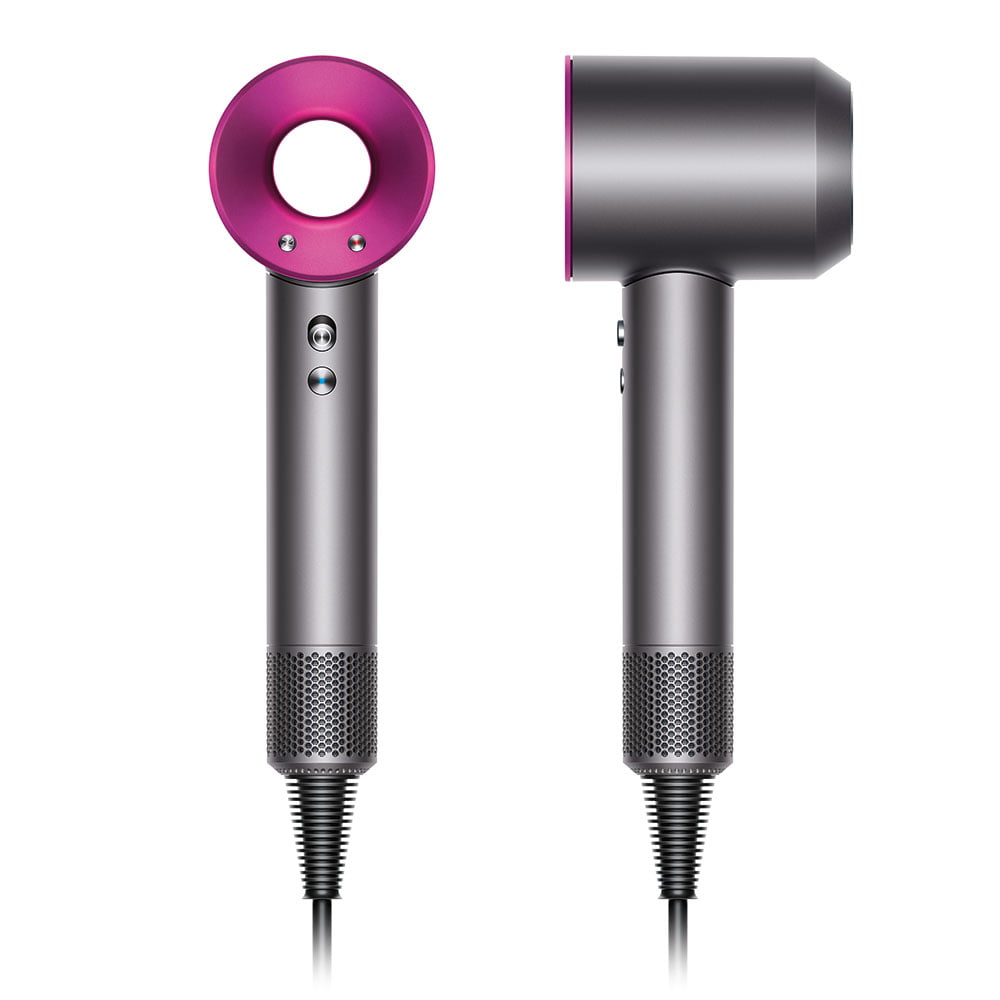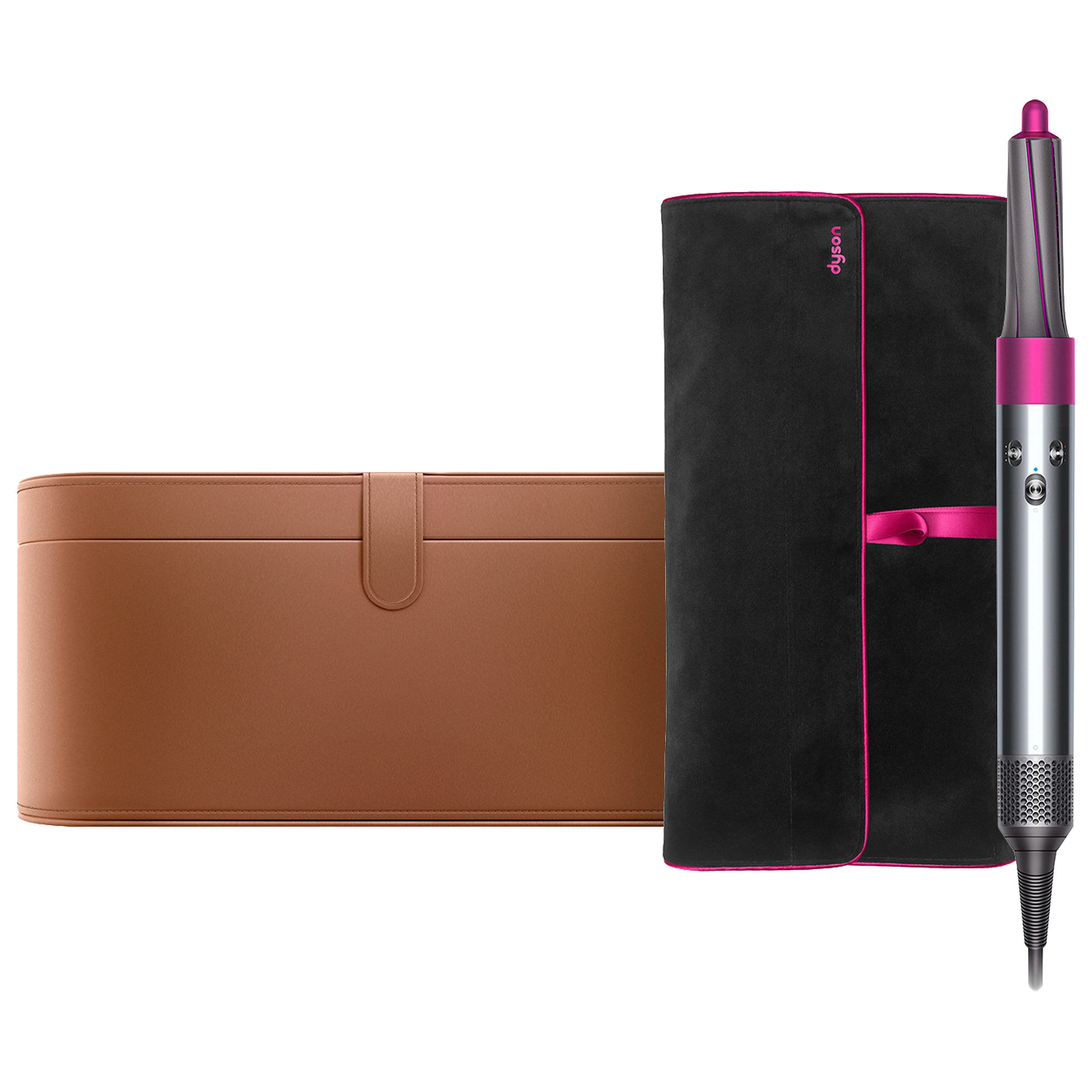Dyson Supersonic Hair Dryer | Iron/Fuchsia | Refurbished
Adjustable Heat Settings. Diffuser. Helps prevent extreme heat damage to protect natural shine. Ultra Fast Drying. Engineered for balance. Magnetic attachments. Controlled by just four buttons.
Includes: Smoothing nozzle, Styling concentrator, Diffuser, Non-slip mat, Storage hanger. The hair dryer re-thought. Helps prevent extreme heat damage to protect natural shine. Air temperature is measured 20 times every second, keeping the temperature under control. Ultra fast drying. Drying shouldn’t take forever. For fast drying you need controlled, high velocity airflow. Magnetic attachments.
- Adjustable Heat Settings
- Diffuser
- Helps prevent extreme heat damage to protect natural shine
- Ultra Fast Drying
- Engineered for balance
- Magnetic attachments
- Controlled by just four buttons
- Dyson Smoothing Nozzle
- Dyson Styling Concentrator
- Dyson Diffuser
Additional information
| Manufacturer Part Number | 306002-02 |
|---|---|
| Assembled Product Dimensions (L x W x H) | 3.10 x 3.80 x 9.60 Inches |






Reviews
There are no reviews yet.